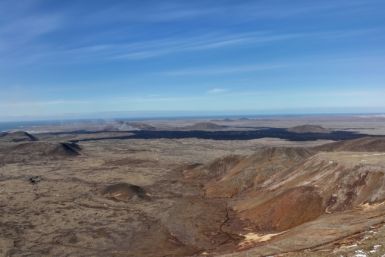British Scientists Solve the Mystery of the Himalayan Yeti
Himalayan Yeti Existed, Say Scientists

The story of the Himalayan Yeti or the abominable snowman has existed since ages; people in Nepal and Tibet believe that there is a mysterious creature resembling a giant ape, living in the roof of the world, Himalayas. Scientists concluded it to be a legend, as there was no evidence to support the existence of the Himalayan Yeti.
There have been several reports of the Yeti's footprints being spotted, each one and a half to two feet apart. The existence of the Yeti came to light when a Greek photographer, N. A. Tombazi, saw the creature in 1925. He was working as a member of a British geological expedition in the Himalayas. The creature was a thousand feet away and could still be seen. He tried going after it, finding giant footprints on the ice surface. He took pictures of the footprints, but scientists could not come to a definite conclusion of the footprints being that of a Yeti.
Captain d'Auvergue, the curator of the Victoria Memorial in Calcutta, India, even stated that while he was travelling in the Himalayas and became snow-blind, a Yeti saved him and nursed him. Several other stories of spotting the hairy creature have been reported.
But it was not until recently that the mystery behind the Himalayan Yeti was solved. British Scientists confirmed that there really was a creature treading the Himalayan Mountains, but it certainly is not an abominable snowman.
The scientists carried out DNA tests on hairs from two unidentified animals that they had found. One was from Ladakh - in northern India on the west of the Himalayas. 40 years ago a hunter had shot down a creature in Ladakh and the remains of that were taken as the sample for the test. The other hair sample was found by film makers in a bamboo forest in Bhutan, further east from Ladakh. It was distinct from anything they had seen in the past. The tests revealed that the unidentified animal, that most people believed to be a Yeti, was in fact a subspecies of the brown bear.
Bryan Sykes, who is a genetic professor in Oxford University, conducted advanced tests on the found hair samples and said that the samples could belong to a hybrid of polar bears and brown bears. Sykes told BBC, "I think this bear, which nobody has seen alive, may still be there and may have quite a lot of polar bear in it."
He also said that as many people reported its behaviour to be very different from normal bears that would have been the reason for it to be considered as a mysterious creature, turning the story into a legend. He further explained that when the results were compared with the genomes of other animals on their database, they found that it had a 100 per cent match to an ancient polar bear jawbone. The bone dates back to 40,000 and 120,000 years ago, he stated that this was the time when polar bears and brown bears were closely related and were separating into different species.
The result, according to him, was something the scientists had expected, but he stated that more work was needed to be done in order to understand and interpret them better. "We do not mean that ancient polar bears are wandering around the Himalayas," but there could be a subspecies of brown bear that descended from an ancestor of the polar bear he stated. Another explanation could be that the Yeti could be a hybrid of the brown bear and the descendant of the ancient polar bear.






